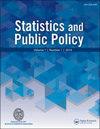Quantifying Gerrymandering in North Carolina
IF 1.5
Q2 SOCIAL SCIENCES, MATHEMATICAL METHODS
引用次数: 73
Abstract
ABSTRACT By comparing a specific redistricting plan to an ensemble of plans, we evaluate whether the plan translates individual votes to election outcomes in an unbiased fashion. Explicitly, we evaluate if a given redistricting plan exhibits extreme statistical properties compared to an ensemble of nonpartisan plans satisfying all legal criteria. Thus, we capture how unbiased redistricting plans interpret individual votes via a state’s geo-political landscape. We generate the ensemble of plans through a Markov chain Monte Carlo algorithm coupled with simulated annealing based on a reference distribution that does not include partisan criteria. Using the ensemble and historical voting data, we create a null hypothesis for various election results, free from partisanship, accounting for the state’s geo-politics. We showcase our methods on two recent congressional districting plans of NC, along with a plan drawn by a bipartisan panel of retired judges. We find the enacted plans are extreme outliers whereas the bipartisan judges’ plan does not give rise to extreme partisan outcomes. Equally important, we illuminate anomalous structures in the plans of interest by developing graphical representations which help identify and understand instances of cracking and packing associated with gerrymandering. These methods were successfully used in recent court cases. Supplementary materials for this article are available online.量化北卡罗来纳州的不公正划分选区
摘要通过将一个特定的选区重新划分计划与一系列计划进行比较,我们评估该计划是否以公正的方式将个人选票转化为选举结果。明确地说,与满足所有法律标准的无党派计划相比,我们评估给定的重新划分计划是否表现出极端的统计特性。因此,我们可以捕捉到无偏见的选区重新划分计划是如何通过一个州的地缘政治景观来解释个人选票的。我们通过马尔可夫链蒙特卡罗算法,结合基于不包括党派标准的参考分布的模拟退火,生成计划集合。使用集合和历史投票数据,我们为各种选举结果创建了一个零假设,没有党派偏见,说明了该州的地缘政治。我们在北卡罗来纳州最近的两项国会选区划分计划中展示了我们的方法,以及一个由退休法官组成的两党小组制定的计划。我们发现,制定的计划是极端的局外人,而两党法官的计划并没有导致极端的党派结果。同样重要的是,我们通过开发图形表示来阐明感兴趣的计划中的异常结构,这些图形表示有助于识别和理解与选区划分不当相关的开裂和堆积实例。这些方法在最近的法庭案件中得到了成功的应用。本文的补充材料可在线获取。
本文章由计算机程序翻译,如有差异,请以英文原文为准。
求助全文
约1分钟内获得全文
求助全文
来源期刊

Statistics and Public Policy
SOCIAL SCIENCES, MATHEMATICAL METHODS-
CiteScore
3.20
自引率
6.20%
发文量
13
审稿时长
32 weeks
 求助内容:
求助内容: 应助结果提醒方式:
应助结果提醒方式:


